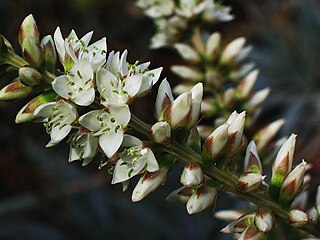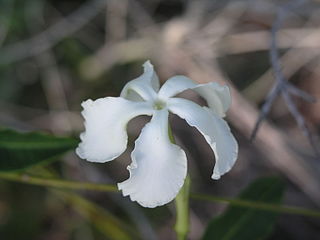| Thenardia | |
|---|---|
 | |
| Thenardia floribunda | |
| Scientific classification | |
| Kingdom: | Plantae |
| Clade: | Tracheophytes |
| Clade: | Angiosperms |
| Clade: | Eudicots |
| Clade: | Asterids |
| Order: | Gentianales |
| Family: | Apocynaceae |
| Subfamily: | Apocynoideae |
| Tribe: | Echiteae |
| Genus: | Thenardia Kunth |
Thenardia is a genus of flowering plants in the family Apocynaceae, first described as a genus in 1819. It is native to Mexico and Honduras. [1] [2] [3] [4]
- Species [1]
- Thenardia chiapensis J.K.Williams - Chiapas, Oaxaca, Honduras
- Thenardia floribunda Kunth - Colima, Guerrero, México State, Michoacán, Oaxaca, Jalisco, Morelos
- Thenardia galeottiana Baill. - Chiapas, Oaxaca, Guerrero
- Formerly included [1]
- Thenardia corymbosa = Forsteronia schomburgkii
- Thenardia laurifolia = Forsteronia laurifolia
- Thenardia scabra = Parsonsia scabra
- Thenardia umbellata = Forsteronia umbellata










